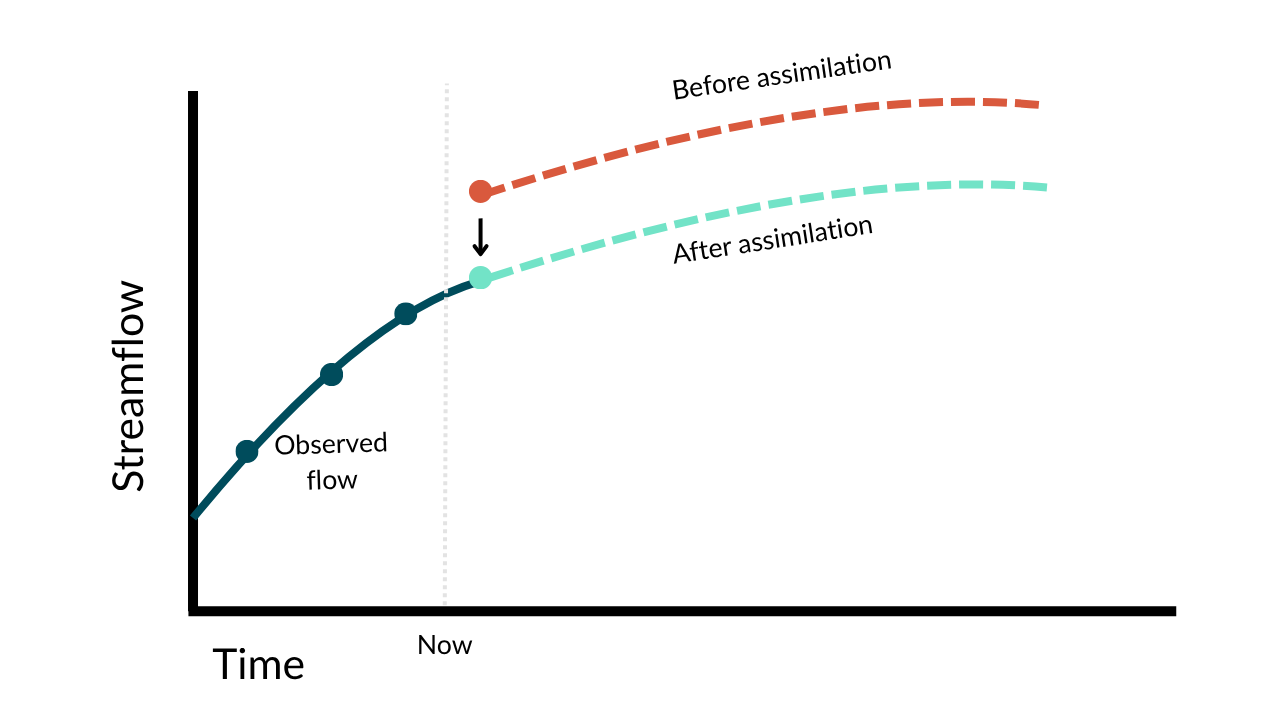.png)
We all know that streamflow can shift fast—sudden storms, rapid snowmelt, or changing temperatures can all cause fast changes in a river or reservoir. For forecasts to stay relevant and useful, they need to reflect what’s actually happening on the ground.
That’s where data assimilation comes in. Data assimilation is the process of updating a forecast model with recent observations to better match current conditions.

The process of data assimilation updates the forecast model with recent observations, so it better reflects what’s happening on the ground in real-time. Think of it like stepping outside before getting dressed—you might adjust by throwing on a jacket based on the chill you feel stepping onto the porch, not just what your weather app said.

Assimilation improves the accuracy and responsiveness of streamflow forecasts, especially in the near term. When forecasts are updated frequently with observed data, they’re more likely to reflect recent changes on the ground—making them more actionable for operations and planning. This is especially helpful for capturing sharp changes in flow, like sudden runoff.
But assimilation isn’t always beneficial–if the input data is noisy or unreliable, it can actually hurt forecast quality. That’s why HydroForecast automatically smooths or excludes poor-quality data, and may even turn off assimilation at specific sites when needed if it’s harming performance.
With the release of Seasonal-3, our latest 90-day streamflow model, data assimilation is now available for seasonal forecasts by default. This is a key upgrade—legacy seasonal models didn’t support assimilation, which meant forecasts could drift from actual conditions, especially early in the forecast window. Learn more in our support document.
HydroForecast now uses assimilation across all forecast horizons by comparing the latest model outputs with the past 72 hours of observed streamflow. It adjusts the model’s starting point, balancing recent data with the model’s understanding of hydrological dynamics. This approach is designed to closely track high-flow events, avoid abrupt swings, and ignore unreliable inputs.
Data assimilation is like that last-moment weather check before heading out the door–it helps HydroForecast stay anchored to reality. By integrating recent observations, assimilation keeps forecasts responsive to changing conditions. And it’s now baked into all HydroForecast models—short-term, seasonal, and annual—so forecasts start closer to where things really stand.
To learn more about how to incorporate HydroForecast into your workflow, reach out to our team to book a demo.